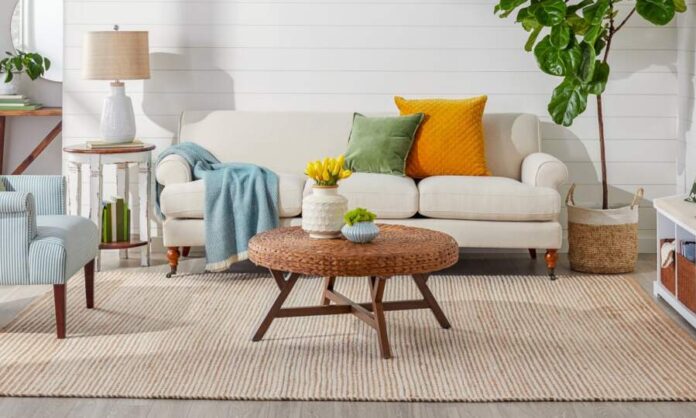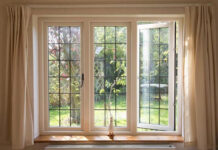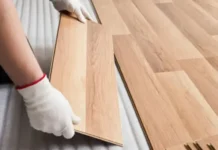Jute rugs are becoming more popular nowadays. You can often spot them placed in homes where they can offer a lot of benefits for the homeowner. Read on to know more about jute rugs.
Material Used in Making Jute Rugs
Jute, often called hessian, is a coarse-stranded vegetable fiber frequently used to manufacture burlap fabric. These natural fiber rugs are frequently handmade from hessian and other plant fibers, creating stunning pieces of organic home decor.
How Jute Rugs Are Made
The jute plant, which is a hibiscus derivative, and its stalks, are being used to manufacture jute and burlap. Its stalks are first soaked entirely in water for many weeks and then stripped before getting woven into the threads used to make jute rugs and bags. The majority of jute is manufactured in Bangladesh and India – as the plant is a native in Southern Asia.
Jute is an excellent material for manufacturing rugs since it is strong, inexpensive, and super soft.
Top Reasons Why You Need Jute Rugs
Jute Rugs Could Add Texture
A handcrafted jute rug’s natural fibers add a sophisticated, raw touch to your space.
A sisal jute rug, made from two plant fibers, has a smoother braid that complements your furniture and complements natural wood decor. With their bulky knit weave, jute rugs are also a preferred base for more vibrant, patterned rugs.
Jute Rugs Are Long-Lasting
Jute area rugs are made up of dense fibers and are designed to withstand moderate foot traffic. Although jute rugs possess a tight weave, they will not hold up as well in a corridor or other busy areas.
These natural rugs could last many years when put in a low-traffic setting, such as in the bedroom.
While you could vacuum the jute rug as frequently as necessary to eliminate dust and dirt, it will not require specific daily care. Moreover, they are naturally brown in hue, which helps conceal stains.
Jute Rugs Are Environmentally Friendly
Because jute is fast-growing, manufacturing jute area rugs would not harm the environment. These eco-friendly rugs are an excellent alternative to possibly expensive machine-made rugs. They are both recyclable and biodegradable, which is advantageous if you decide to modify your decor in the future.
Jute Rugs Can Complement Any Style of Home Décor
Jute rugs are quite versatile and may be used to create a variety of different looks.
A flatweave type of jute rug is one of the most popular area rugs due to its natural fibers that easily generate a free-spirited look. On the other hand, a natural jute rug can complement any decor, whether you prefer contemporary or classic design. You can also purchase a rug made with bleached jute cloth for a clean, casual style or a sisal jute rug that has a dark-brown border for a more dramatic look.
To summarize, jute rugs have plenty of advantages. As a natural material, jute adds a natural feel to any room. Jute fibers are twice as resilient as cotton fibers, and they feel softer underfoot compared to other plant-based rugs. Due to the quick growth of the jute plant, jute material classifies as an environmentally friendly, renewable resource. The non-flammable material does not cause static and is ideal for use in areas with moderate traffic, including home offices, bedrooms, living and dining rooms. Although manufacturers could dye its biodegradable fibers in a number of colors, the majority of jute rugs are sold in their natural beige tint. Dirt penetrates through the surface, and the majority of stains fade away with time. Jute rugs are less expensive compared to other floor coverings due to their abundant supply.
The Drawbacks in Using Jute Rugs
Although jute rugs have numerous benefits, they also have some drawbacks.
Because jute rugs can degrade with prolonged usage, producers do not advocate using them in high-traffic areas. While most of the stains can easily blend into the rug, some stains would demand special cleaning.
Like other plant-based fibers, Jute is absorbent and would not react to water well. Wet cleaning may cause it to shrink or disintegrate; therefore, dry cleaning is recommended. Because water destroys the surface and promotes mildew growth, jute rugs should not be used outdoors or in humid environments.
Jute Rugs Care Procedures
- Vacuum the rug thoroughly every week with the beater bar switched off to avoid dirt accumulation.
- Avoid using a steam cleaner.
- To remove wine and tomato-based stains, blot water spills with a clean white rag and dampen a cloth with club soda.
- With a hairdryer, dry any damp areas.
- Retailers provide preventive sprays that can help jute rugs to retain their porosity and resist liquid spills.
Tips For Jute Rugs To Last Longer
- Due to the natural color variations of jute, grime and pet fur appear less noticeable.
- When visible wear and tear occurs, flip the rug over; the majority of producers design the jute rugs to be reversible.
- Sunlight has a tendency to fade the material; that is why you have to raise your window shades to keep the light away from your rug. Rotate your rug annually to maintain an even wear pattern.
- While the natural woven threads are incredibly absorbent, the best method to keep a jute rug protected is to clean up spills promptly and vacuum them periodically without utilizing the beater bar to remove embedded debris. Raise your rug upwards to vacuum the shed strands.
- Because of its soft fibers, jute rugs are not recommended for high-traffic areas. Instead, use them in areas where they may complement your décor, be admired, and remain untrampled.
Jute Rugs for Outside Use
Certain jute rugs are woven in such a way that it is knobby and rough rather than the soft pile (which is typically associated with jute). While this weave imparts a rustic appearance and feel, it may irritate the sole of your feet if you walk on it barefoot. But that is no reason at all to toss it out in the trash.
You can use these knobby and roughly woven rugs for your foot massage. You can also display the jute rug outdoors by overlaying it with a softer, synthetic rug. Doing so can add an extra layer of protection to the jute while maintaining the classic appearance that the jute evokes.



































































